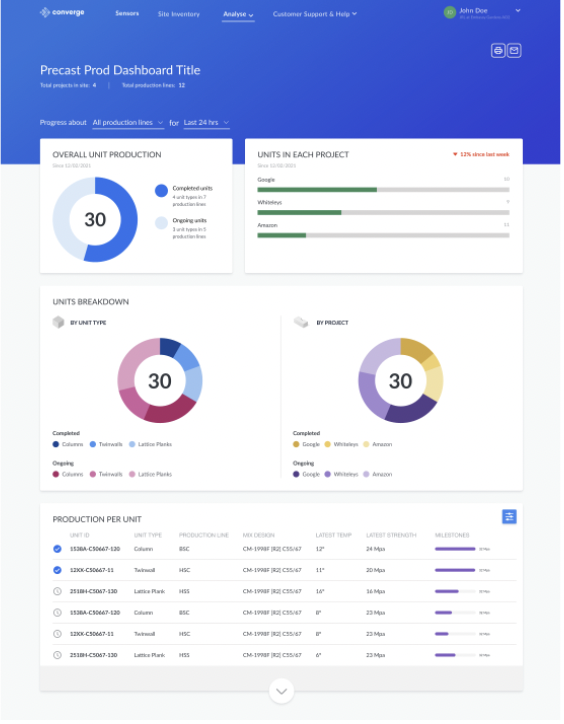Converge’s ConcreteDNA technology is today used to instrument 20% of total throughput, ensuring reliable information is available to users across the business. It has led to a reduction in cycle times and 6 man-hours per week.
CEMC is one of Europe’s leading precast factories, producing over 16,000 precast units per annum.
Schmidt hammers were previously used by operatives to measure unit strength prior to and prestress. They are considered unreliable as they require calibration every year and the manual action of a person which is prone to error. From a technical perspective, they measure force, and not in-situ strength of concrete based on Maturity.
Curing data across the factory varied dramatically, given inaccurate information from hammers, but also varying temperatures across the factory over different seasons. This is a particular problem in outdoor areas where larger, more expensive units are demoulded.

Converge’s ConcreteDNA technology is today used to instrument 20% of total throughput, ensuring reliable information is available to users across the business.
Data is easily viewed by operatives, with predictions and alerts available to optimise demould times.
Production leaders are able to view top down information with an intuitive, precast specific dashboard to understand performance across the entire factory against production targets.

Confidence from automated digital data has meant that operatives are no longer required to use schmidt hammers, reducing labour effort and time.
Heightened certainty from having accurate information has also negated the need for an excursion zone previously required for Health & Safety reasons during prestressing, allowing the factory to optimise its workflow.
Annual data collection will allow for better understanding of historical performance of mixtures vs temperature for better future planning/estimating/retrospectives. This is particularly useful to CEMC given aggressive targets for embodied carbon reduction, and balancing low/replacement cement with efficiency and curing time.